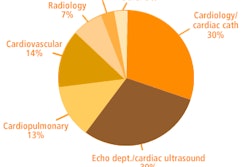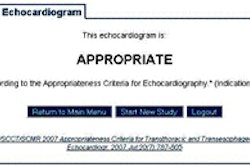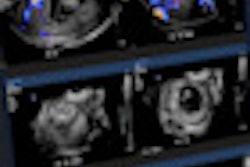Quality assurance (QA) in the vascular ultrasound laboratory can be a laborious process, and not much fun. But this crucial task isn't just about generating statistics; it's what you do with that knowledge that counts, according to an expert on ultrasound QA.
"When you do gather data, it's really important to use it," said Cindy Weiland, RVT, RRT, director of accreditation and quality assurance monitor for the Intersocietal Accreditation Commission (IAC). She shared her thoughts on QA for vascular labs during a talk at the recent Leading Edge in Diagnostic Ultrasound conference in Atlantic City, NJ.
A comprehensive QA program includes several components, such as quality control of equipment; quality assurance for assessing compliance with standards, policies, and procedures, as well as documenting accuracy and outcomes; and continuous quality improvement, according to Weiland.
In developing a QA program, it's important to first identify the quality indicators, which is what you want to assess in the laboratory, she said. Quality indicators may relate to:
- Structure (the overall organization)
- Process (how exams are performed)
- Outcome of care (statistical analysis of desirable and undesirable results)
Once the indicators are established, thresholds need to be identified. Thresholds are defined as a percentage of acceptable deficiency; they may be defined for numerous indicators such as test accuracy, waiting time, and scheduling time, Weiland said.
The data collection process will make use of sources such as medical records, lab reports, surgical reports, other imaging modalities, and questionnaires. Data worksheets can be used to organize this information, she said. A number of software programs are available to help with this task.
The time frame and volume of data to be collected also need to be defined.
"If you're in a huge lab where you do 20,000 patients in a year, tracking every single positive patient may not be the best thing," Weiland said. "If at all possible, in a perfect world, the best thing to do would be to track anybody that was going to have any sort of follow-up exam or surgery. But if you're in a huge lab, you may say, 'OK, we want to track 100 a year.' Then again, if you're in a very small lab, it's really important probably to take note of any patient that you feel might have some sort of follow-up."
Some examples of QA logs can be downloaded from the Intersocietal Commission for the Accreditation of Vascular Laboratories (ICAVL) website, according to Weiland.
Data analysis
Lab data should include figures on sensitivity (the probability that the test will be positive when disease is present), specificity (the probability that a test will be negative when disease is absent), and accuracy (the number of correct findings regardless of whether disease is present or not), Weiland said.
Correlation matrices allow for comparison of ultrasound findings with other imaging studies. If no other imaging studies were performed, correlation of ultrasound findings with surgical reports can also be determined, according to Weiland.
"It's good to know that the surgical outcome or surgical findings correlated well with the [ultrasound] exam," she said.
Tracking clinical outcome takes a lot of work, but can be of value in situations such as tracking venous patients, she noted.
Peer review can also be a valuable process. Physician review can encompass exam findings, report content, and adherence to diagnostic criteria. This can be overseen by a medical director or technical director, or somebody who has a good grasp of proper protocols and diagnostic criteria, Weiland said.
The same process could be performed for a technologist review, covering image and waveform quality, following protocols, and performance of technically correct exams, she said.
These findings need to be communicated to staff on an ongoing basis, according to Weiland.
"This can be awkward, but everybody has to be open to being wrong on occasion," she said. "When you find things that are wrong, don't put your head in the sand. It's of use and can be rather detrimental if something happens with a patient when you know something isn't being done correctly, and you haven't done anything about it."
Peer review worksheet examples can also be downloaded from the ICAVL's website, she said.
The data should be used to develop corrective action plans, Weiland said.
"If you go through and see that things are not correlating because some of the physicians aren't following the criteria, then you make a plan," she said. "Like we're going to look at these reports routinely for the next four months, and we're going to come back and look at the correlation again to see if it changes."
Regular QA meetings are a good idea and offer a good learning experience, she said. Meeting minutes should be taken.
All staff should be involved, and people should be held accountable, Weiland said. QA should also be an ongoing process.
"If you apply for accreditation, you know you're going to have to do it," she said. "You shouldn't wait for three years and rush back to try and collect data for the last three years, because if you've been missing something for three years now, you're really doing a disservice to yourself and to your patients. So if you can do it where you're doing it every quarter or at least every six months, it makes it less of a painful process and really does help enhance everything that you're doing with your lab."
By Erik L. Ridley
AuntMinnie.com staff writer
July 16, 2010
Related Reading
Vascular ultrasound QA requires consistency, validation, August 4, 2008
Ultrasound quality strongly affects ovarian cancer management, January 21, 2008
Copyright © 2010 AuntMinnie.com




















